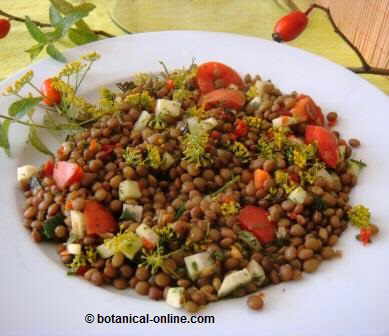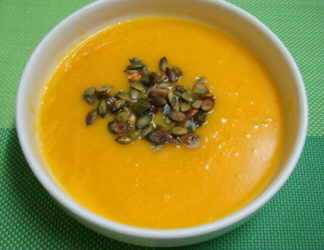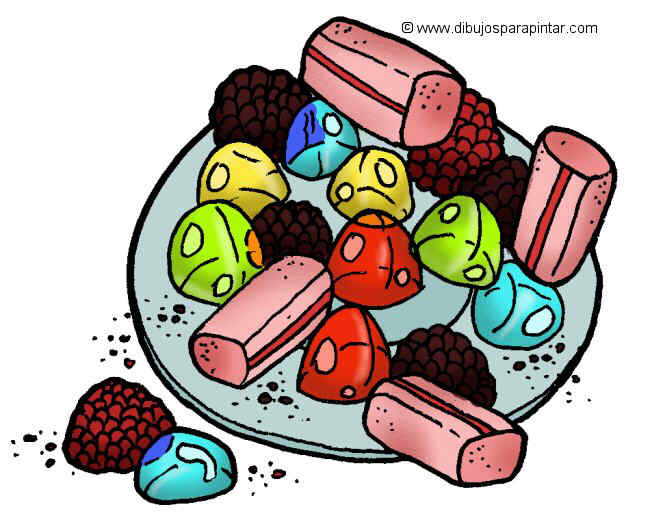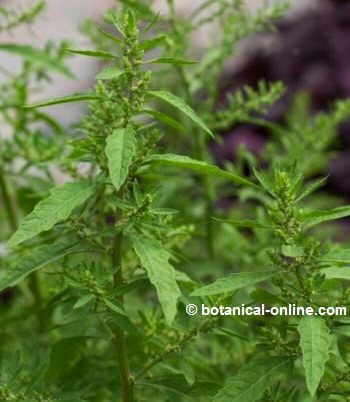Contents
- 1 Benefits of eating hot peppers and chili peppers
- 1.1 What are hot peppers and what do they provide?
- 1.2 Importance of climate and cultivation conditions in hot peppers pungency
- 1.3 Types of chili in the diet
- 1.4 Medicinal properties of hot peppers and chili peppers
- 1.5 Which part of the peppers has more capsaicin or is it more spicy?
- 1.6 Benefits of hot peppers and chili peppers
- 1.7 Properties of hot pepper or chili pepper against obesity
- 1.8 Benefits of hot pepper for the stomach
- 1.9 Can hot peppers cause ulcers or stomach cancer?
- 1.10 Hot peppers to keep the brain young
- 1.11 How to take hot pepper?
- 1.12 External uses of capsaicin: Chili peppers for the treatment of pain
- 1.13 How does capsaicin work?
Benefits of eating hot peppers and chili peppers
What are hot peppers and what do they provide?
There are many types and varieties of peppers and chili peppers. All of them are plants belonging to the Solanaceae family and the Capsicum genus, which includes 22 species, of which only 5 are cultivated.
Peppers are used as spice due to the presence of capsinoids, such as capsaicin, in their fruits and seeds. These components are responsible for the characteristic spicy flavor that these plants have.
Importance of climate and cultivation conditions in hot peppers pungency

The variety, the climatic and cultivation conditions (heat and drought increase the capsaicin content of the fruits), can cause variations in the capsinoid content of these foods.
Types of chili in the diet
Habanero Chile (Capsicum chinense): It is the most spicy of all.
- Spicy chile, chilli pepper, hot pepper (Capsicum annuum): Most chili peppers or hot peppers are varieties or plants of this species.
- Chile tabasco, Malagueta pepper, Siling labuyo, Piri piri (Capsicum frutescens)
- Aji (Capsicum baccatum) in varieties such as Ají amarillo, Lemon drop or Bishop’s crown
- Chile of wax, apple-tree chile, locoto, rukutu, perón or rocoto (Capsicum pubescens).
Medicinal properties of hot peppers and chili peppers
From a medicinal point of view, the properties of chili peppers or hot peppers, depend largely on their content in capsinoids and capsaicin, which is a powerful natural anti-inflammatory (both external and internal use), natural antibiotic, analgesic and thermogenic (stimulates weight loss).
Which part of the peppers has more capsaicin or is it more spicy?
The part of the plant most rich in capsaicin are the fruits, especially in the placenta, that is, the central white part of the peppers inside (86% of the total content of capsaicin). In smaller quantities, it is also found in the rest of the fruit (6% in the pericarp) and in the seeds (8%). Even less, in the leaves of the plant near the fruit.
Capsaicin is manufactured by plants as a defensive medium to protect against the attack of herbivorous animals.
Benefits of hot peppers and chili peppers
Because of its content in capsinoids and capsaicin, chilies have very diverse and complex properties in the body. Its effects are still under study, but all the results so far show that they contain a lot of promising properties.
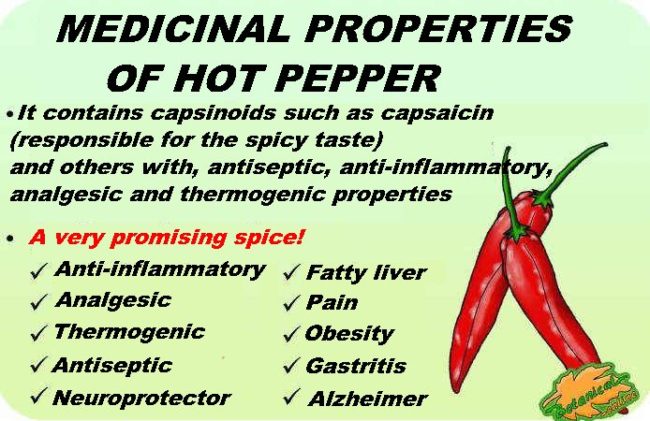
Although capsaicin from hot peppers is mainly known because of its anti-inflammatory and analgesic properties against pain in external use, it is also very interesting in internal use. Capsaicin is antioxidant, anti-inflammatory, antibiotic, and has anti-obesity properties:
Properties of hot pepper or chili pepper against obesity

Within the study of diet, the connection between palatability, spices, and obesity is increasingly evident. Capsinoids and derivatives (among which capsaicin is found) are one of the most studied compounds in this field.
On the one hand, the spicy taste contributes, from different signaling pathways, to increase the feeling of satiety.
On the other hand, at the level of metabolism, capsaicin increases thermogenesis (fat burning) and has a negative calorie balance (it burns more calories than the food contributes). Their properties are also being studied for their possible effect on sports performance.
For all these reasons, capsinoids increase the oxidation of fats, increase the energy expenditure of the body and increase satiety. It is estimated that, only by consuming capsaicin every day, after the years could a significant weight loss occur, between half a kilo and up to 6.5 kg. This effect, in turn, protects against fatty liver.
Benefits of hot pepper for the stomach
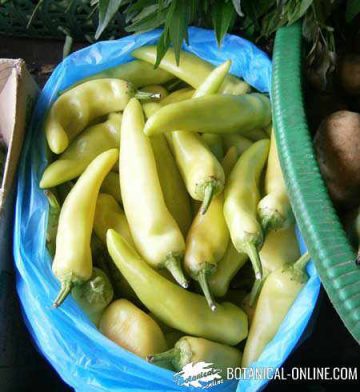
It has been observed that eating peppers or hot peppers during meals stimulates the acid secretion of the stomach, but also stimulates the production of stomach mucus, which protects the stomach. Its secretory properties makes this spice a digestive remedy, for indigestion.
Spiciness, therefore, has a protective effect on the mucosa. In addition, capsaicin also has antibacterial activity against Helicobacter pylori, the main cause of gastritis and stomach ulcer.
Can hot peppers cause ulcers or stomach cancer?
Probably at this point the reader will be wondering if this food will not be harmful to the stomach, contrary to what is described in these lines. First, in the dose it is the remedy, so you should not abuse them because, as common sense dictates, when taken in excess, they are irritating for the stomach, and may even cause asthma attacks in sensitive people.
Second, it is interesting the opinion of some scientists on the subject that spicy food could increase certain types of cancers due to their content in pesticides, which denotes that it is very important to consume these organic ingredients, free of toxic pesticides. For example, there are studies that correlate capsaicin consumption of chili with an increased risk of stomach and gallbladder cancer, however, the pure substance has no genotoxic or carcinogenic effect.
Hot peppers to keep the brain young

In animal models, capsaicin has been shown to improve cognitive abilities in rats with Alzheimer’s. This effect could be due to the antioxidant and anti-inflammatory properties of capsaicin.
Finally, we must consider the relationship that has been found between the consumption of aromatic herbs and spices (which includes the consumption of hot peppers and spicy spices), with the reduction of numerous diseases.
How to take hot pepper?
Many people do not consume these spicy foods due to lack of recipes or practical advice.
In this sense, it is very interesting those studies that have observed that with the maceration of hot pepper with virgin olive oil, substances of both ingredients react, producing a powerful natural anti-inflammatory called olvanil (N-oleylvanillamine), a capsinoid derived from chili, which it is not spicy (the oil itself will be spicy, due to the presence of other capsinoids), and it is more anti-inflammatory than capsaicin from which it is derived.
External uses of capsaicin: Chili peppers for the treatment of pain
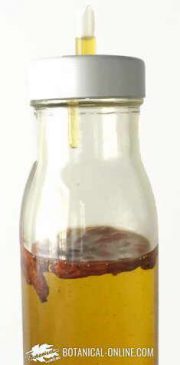
The medicinal properties of chili peppers or hot peppers are mainly due to their content in capsinoids or capsaicinoids (capsaicin, dihydrocapsaicin, nor-dihydrocapsaicin, homocapsaicin, homodihydrocapsaicin, etc.). Among them, the most important, for its properties, is capsaicin.
There are numerous commercial creams with capsaicin or made from this principle, such as Qutenza (contains 8% capsaicin), or creams with zucapsaicin, such as Civanex and Zuacta. All of them are classified as topical analgesics.
The most important medicinal use of capsaicin refers to its use as an analgesic in the treatment of pain. In this case we use mainly preparations in the form of cream, oils or ointments that, applied externally, can reduce the pain sensation that produce such painful diseases as rheumatoid arthritis, fibromyalgia, diabetic neuropathy, psoriasis and for all kinds of pain: muscle pain , neck pain, etc.
How does capsaicin work?
The brain captures a message of pain (spicy) and reacts by producing endorphins substances, very similar in structure to morphine, capable of eliminating the sensation of pain.
On the other hand, besides “cheating pain”, it has been shown that this component is capable of neutralizing substance P, a transmitter of pain from the periphery to the brain. By decreasing this substance, the brain does not receive enough pain signals from the affected area.
![]() More information on hot peppers
More information on hot peppers

